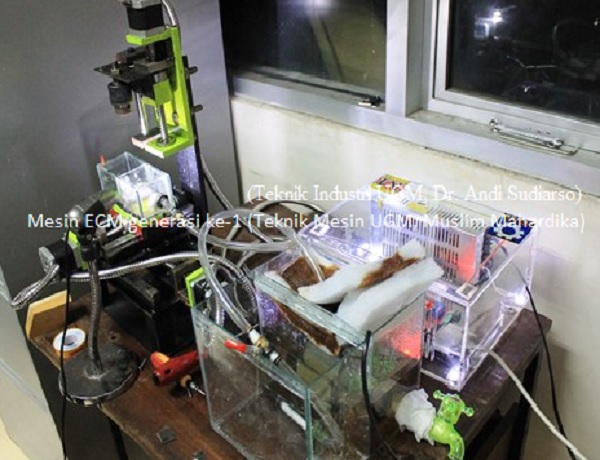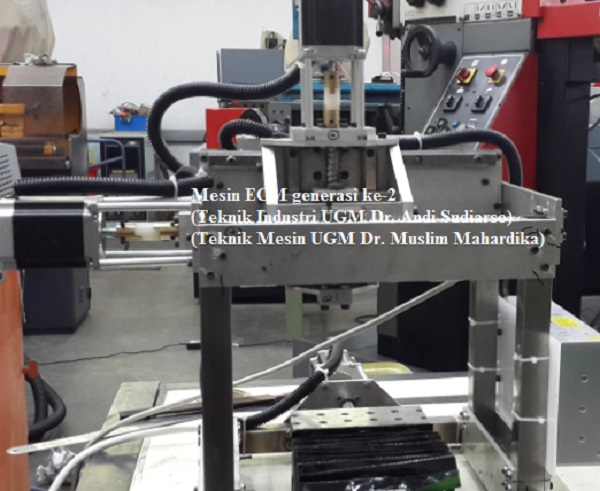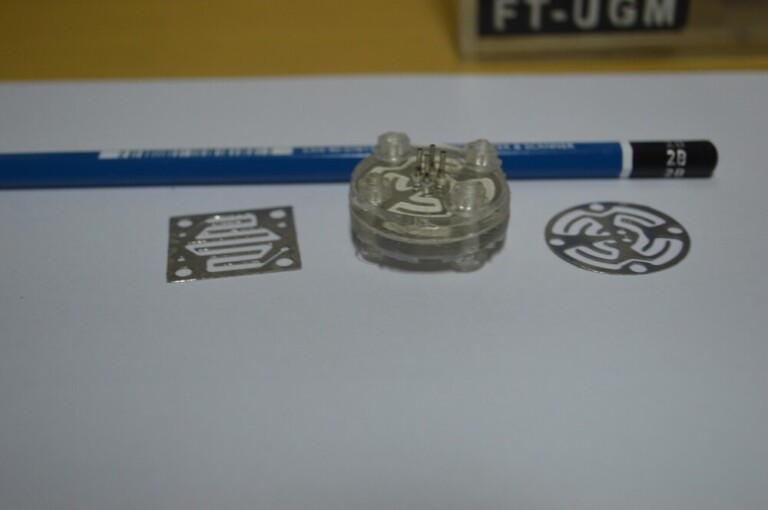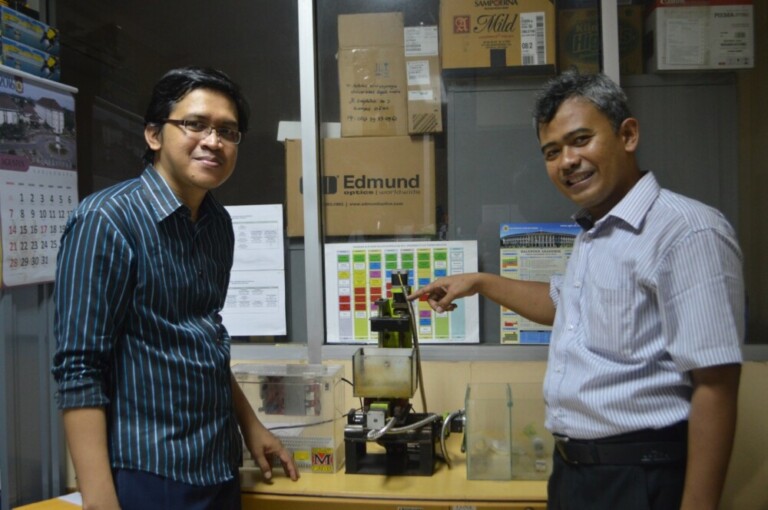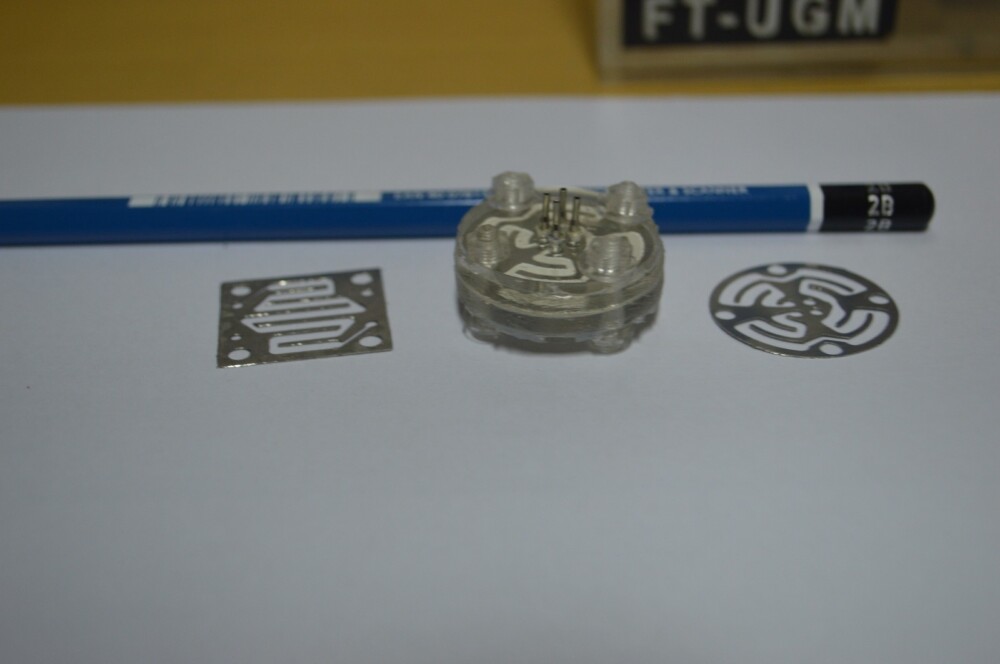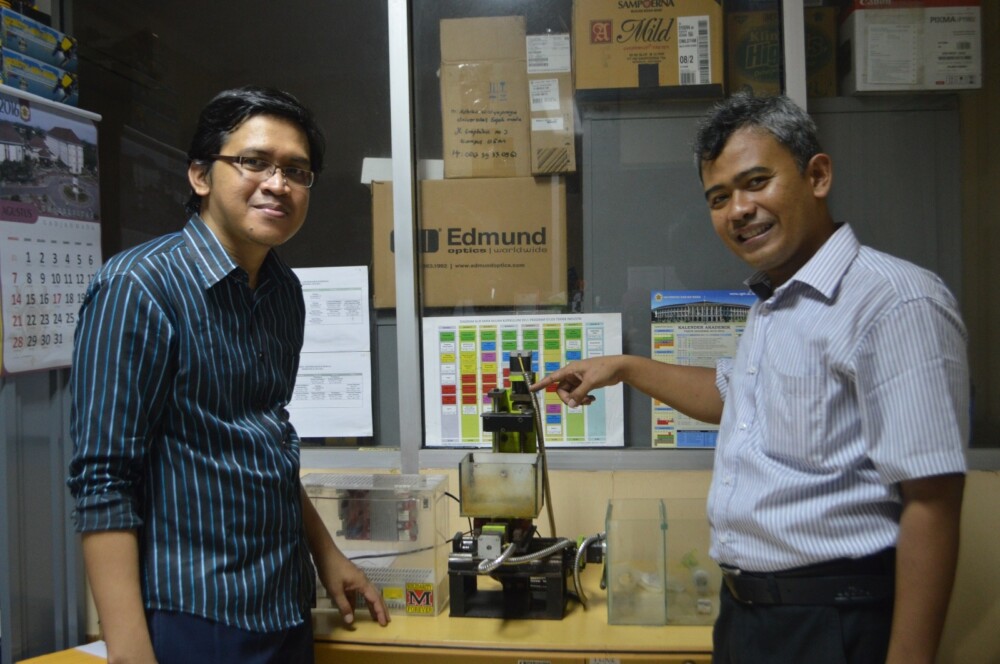Electro Chemical Machining (ECM) is still unpopular among the general public. Usually, they tend to be more familiar with terms like lathes, milling machines, sawing machines, which are included in the category of conventional machines. ECM Engineering is a type of non-conventional engineering where there is no contact between the cutting tool and the work piece. Even without contact, this machine can still cut work pieces very accurately.
Lecturers at the Department of Mechanical and Industrial Engineering UGM, Dr. Andi Sudiarso and Dr. Mahardika Muslim, became pioneers in the manufacture of ECM, assisted by several students. The new engine was first created in 2008-2009. In 2010 and 2011, funded by the Faculty of Engineering and Department of Mechanical and Industrial Engineering at UGM, the ECM engine generation 1 was completed and produced.
Between 2013 and 2015, in collaboration with Keio University, Japan, in this case represented by Prof. Norihisa Miki, and Dr. Gunawan Setia Prihandana (a Class of 1999 alumnus of Mechanical Engineering at UGM), were selected to receive USD 25,000 in funding from JICA (Japan International Cooperation Agency). Having secured funding, the ECM machine second generation was successfully created with more sophisticated controls. Betweem 2015 and 2016, the ECM engine development continued after obtaining research IDR 350 million in funding from the Higher Education Grant.
On 5 November 2015, the ECM was presented in the presence of Minister of Public Works and Housing, Dr. Ir. Mochamad Basoeki Hadimoeljono, M. Sc, and this was also witnessed by dozens of manufacturing companies from Indonesia. The presentation was made at the 7th Indonesian Industrial Research Forum 2015, with the theme of Acceleration of UGM Contributions to Strengthen Competitiveness through Manufacturing, Infrastructure, and Information Technology Industry that was held at UGM’s Jakarta campus.
According to Muslim Mahardika, one of ECM’s applications is microchannel manufacture on SS 316L sheets with 200 µm thickness. Microchannel is one important part of the Microfilter. Meanwhile, The microfilter has the same role as the dialyzer for the Wearable Artificial Kidney (WAK) or, as it is better known, an artificial kidney.
“The advantages of Microfilter compared to dialyzer are that it is smaller in size and capable of distributing the blood stream at a pressure of 10 kPa (hydrostatic pressure on blood vessels in human kidney),” Muslim said, Wednesday (31/8).
With these advantages, the Microfilter will be able to work without other supporting equipment such as pumps. Research related to this machine has been conducted and published by several international journals indexed by Scopus. Hopefully, this machine will promote domestic manufacturing industry and reduce imports from other countries, so Indonesia can be more independent.


